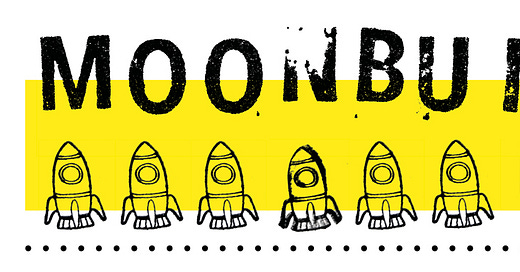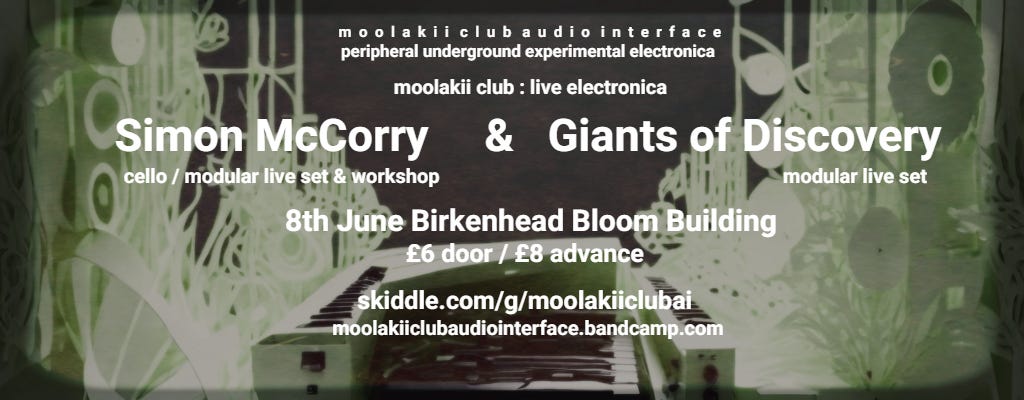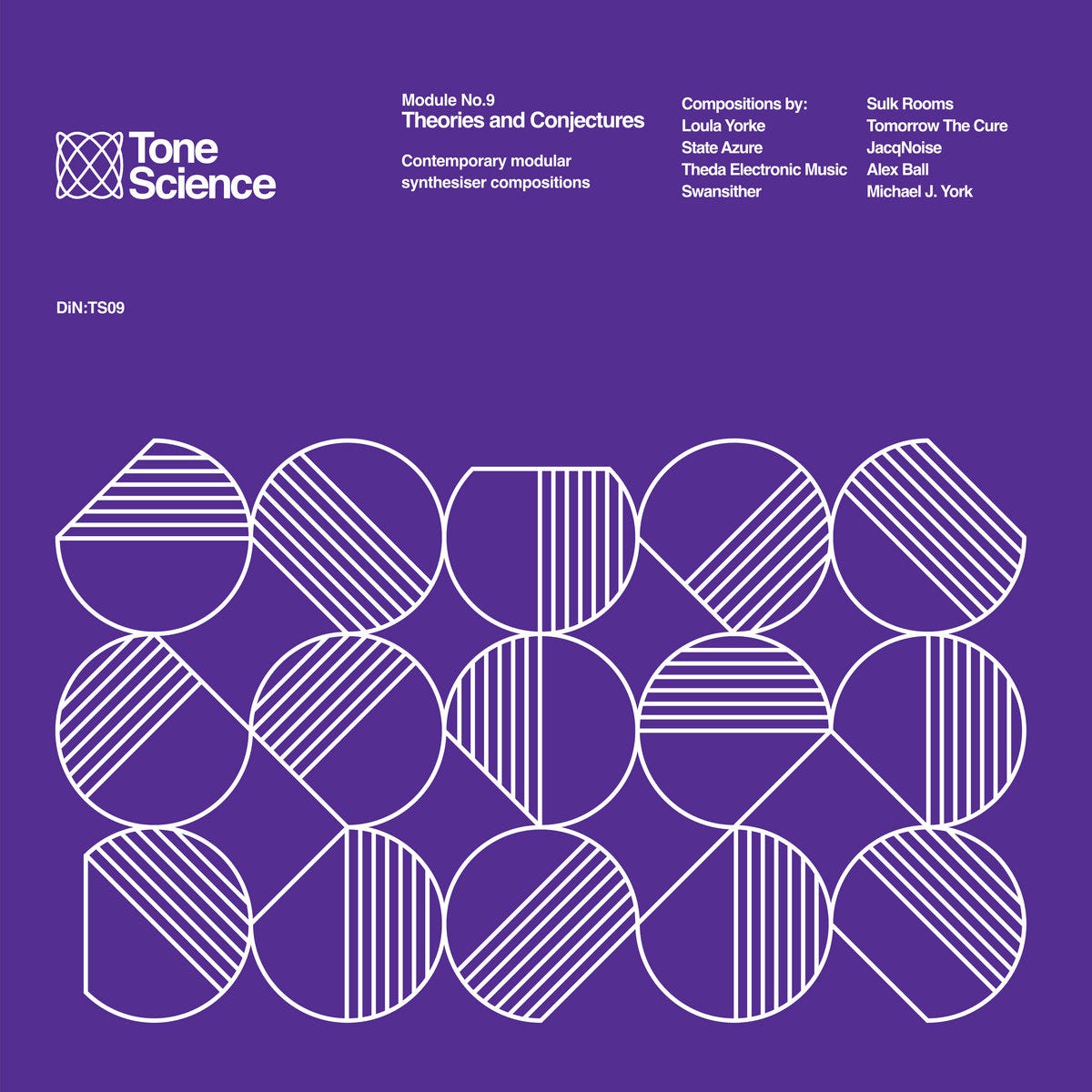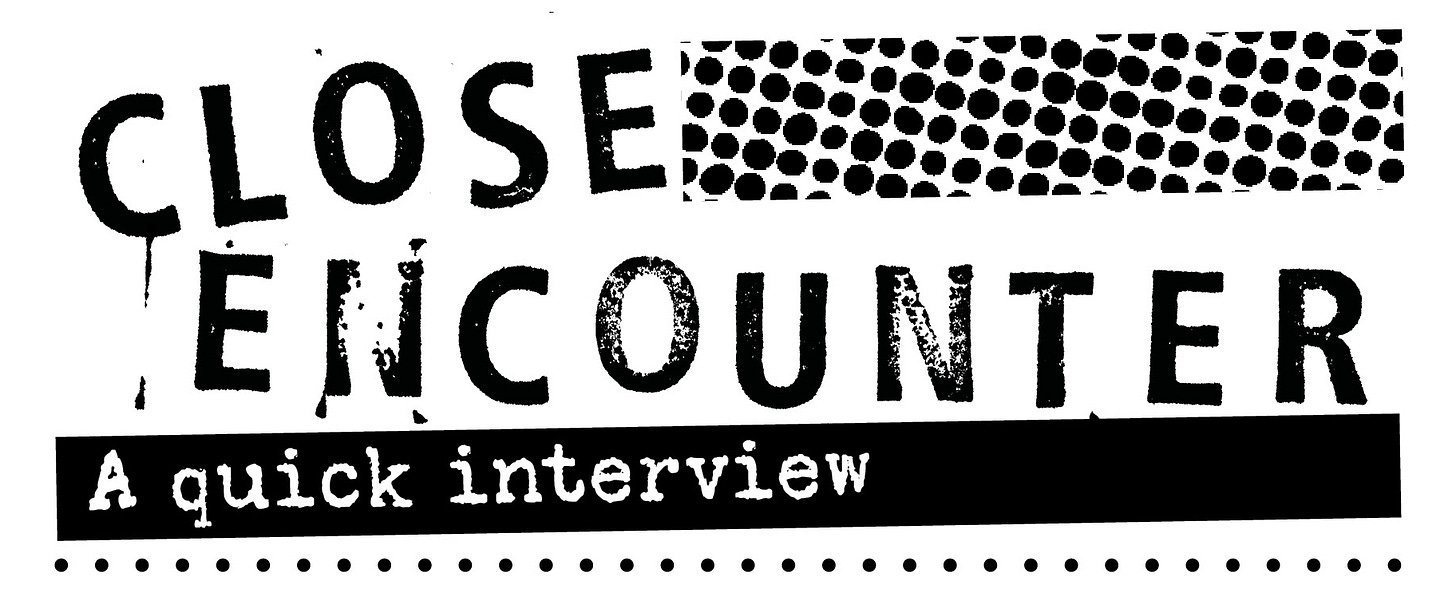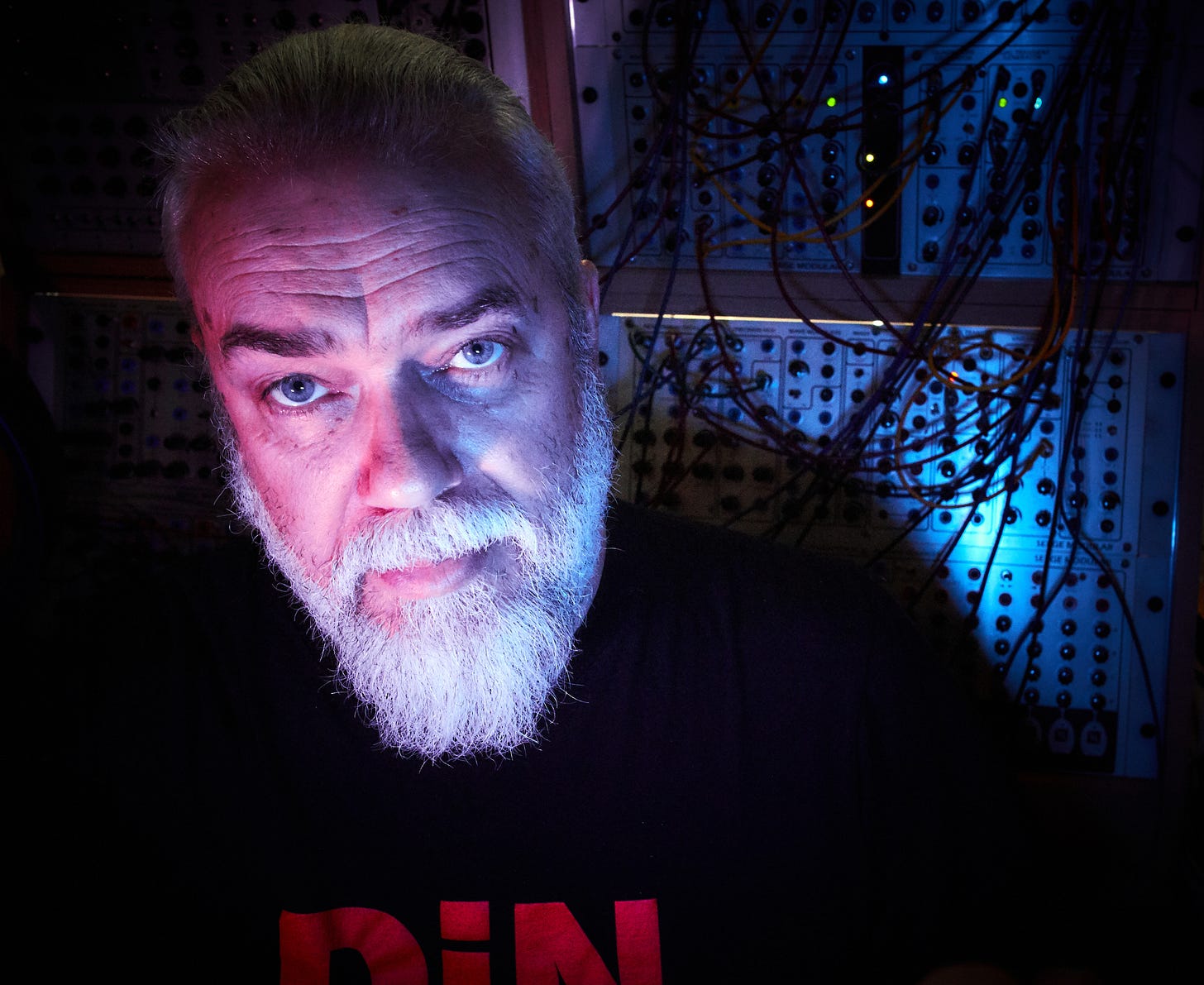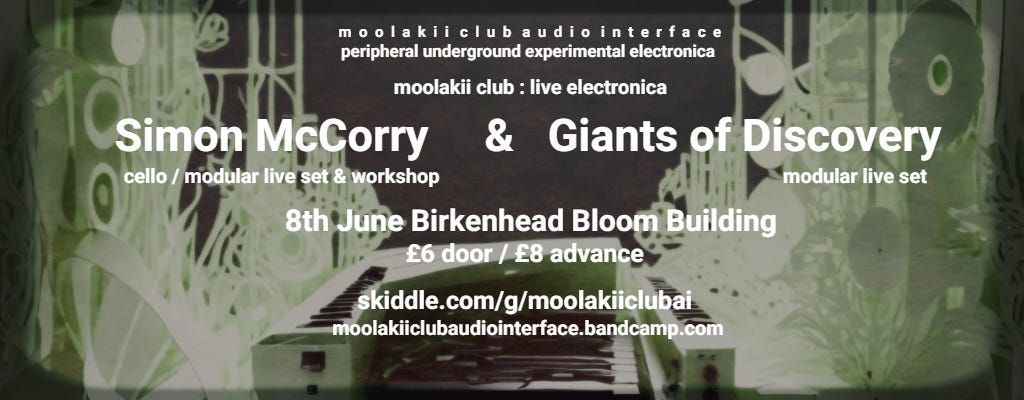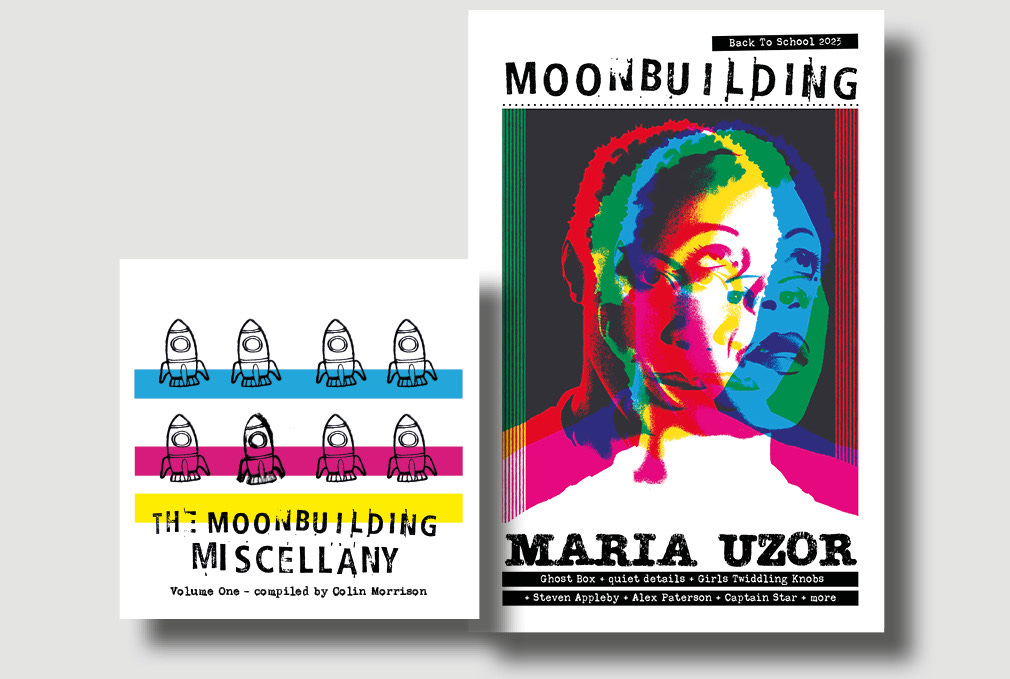Issue 14a / 19 April 2024
In part one of this week's dose of DIY electronic goodness... Album Of The Week: ‘Tone Science Module No.9 Theories And Conjectures’ + Ian Boddy interview
It’s been a BUSY old week round here. On Wednesday I was at The Book Hive in Norwich to interview Matthew Collin about his excellent new book, ‘Dream Machines: Electronic Music In Britain From Doctor Who To Acid House’ and on Thursday I was in at the Velocity Press shop in Peckham to hear Ben Murphy talking to DJ mag editor Carl Loben about his new book, ‘Ears To The Ground – Adventures In Field Recording & Electronic Music’. You’ll be be hearing about both those books here over the next few weeks.
As a result of this sudden whirlwind of activity there’s not been much writing going down, which is a problem when you’ve got a weekly newsletter to feed. In an attempt to catch my own tail, which is currently swishing off several miles down the road, I’m splitting this week’s newsletter in two. There’s this one now and this afternoon you’ll get one with all my recommendations, musical and otherwise. It’ll be interesting to see how that works out. Necessity is the mother of invention and all that.
Right, gotta go, part two ain’t going to write itself. Well it might, but I’m not sure how well versed Chat GPT is in DIY electronica and the intricacies of review writing. Let’s not take that chance eh?
Neil Mason, editor
moonbuildingmag@gmail.com
Issue 14 Playlist: See this afternoon’s mailout
Buy us a coffee: ko-fi.com/moonbuilding
***ADVERTISE HERE***
Email moonbuildingmag@gmail.com
VARIOUS ARTISTS ‘Tone Science Module No.9 Theories And Conjectures’
(Tone Science)
Not sure how many compilation series I have every volume of, but I’ve got all nine of the Ian Boddy-curated ‘Tone Science’ collections. If you’ve got some catching up to do, it’s one of those ideas that is simple, but very effective. Each volume features nine tracks drawn from the broad church of artists working with modular synthesis today. And that’s it.
Ian’s DiN label also does the ‘iNDEX’ series, now running to eight volumes that feature two tracks from from the last 10 DiN releases as well as ‘MiX’ editions, which are broad-brush mixtapes starring artists who’ve released on the label. The takeaway here is that Ian Boddy knows what makes a good compilation. I bet swapping tapes with him back in the day was a treat.
This installment of ‘Tone Science’ feels a little different due to its run of new school artists, including Loula Yorke, Swansither and Sulk Rooms. New school frontrunner, Polypores, has released two full artist albums on the main DiN label – ‘Hyperincandescent’ in 2022 and ‘Multizonal Mindscramble’ from last autumn. Ian talks about DiN pushing far beyond its own musical heritage, which is based in the Berlin School, and how artists like Stephen Buckley are “untethered from the past and able to wander freely into unexplored worlds of sonic soundscaping”. This collection feels like it comes with that message writ large.
‘Tone Science Module No.9 Theories And Conjectures’ opens with ‘Eala’ by the excellent Loula Yorke. Loula comes from a rave background and is a fairly recent modular convert, but that doesn’t mean she hasn’t nailed the format. Her recent ‘Volta’ album was released to rave reviews across the board, including Moonbuilding Weekly Album Of The Week, so you know.
Ian describes the opening two tracks – ‘Eala’ along with State Azure’s ‘Scanner’ – as “pointillistic compositions”. The art student in me says that doesn’t mean all dotty. My music theory is pretty rusty, but it refers to music made from separately formed parts, when musical notes are made in seclusion rather than in a linear sequence. If it doesn’t help, listening to these first two tracks might. On ‘Eala’, the bright metallic tinkles, swirling sequencer patterns and resonant basslines are distinctively Loula Yorke, while State Azure turns in a sleek Vangelis-y workout full of choral-like drones, pings and raspy growls.
Next up the mood shifts with ‘Per-Bast’ by Theda Electronic Music and ‘Muad’Dib’ from Swansither getting atmospheric on us. Swansither is the work of Shropshire-based Tom Kennedy who credits Ian with inspiring his modular journey having met him at Synthfest in 2018. And here Tom is on one of his compilations, not because he’s blowing sunshine up his low-pass filter, because he should be.
As is Thomas Ragsdale’s Sulk Rooms whose ‘Grasping The Eye Of The Duck’ takes us into darker territory with a track that feels a little unsettling, subterranean, like there’s something out there in the dark as it slowly builds to its conclusion.
We then move into a trio of more rhythm-based tracks, starting with the release’s standout. ‘Minimum’ comes from Wayne Taylor’s Tomorrow The Cure, an artist who has been making music for two decades. It’s funny, you can be a music writer of several decades standing and still have blind spots. Which is kind of the beauty of music – you can’t listen to it all. I’m looking forward to discovering Wayne’s back catalogue on the strength of this track. ‘Minimum’ starts with four tones, over and over, as the tracks builds before giving way to a melody only to return as the track settles into its gentle groove before fading leaving only the tones. There’s something very peaceful about its Riley-esque minimalism.
JacqNoise’s ‘Lono’ stays in the minimal world with a night creeper of track that rumbles like a goods train driven by Cabaret Voltaire, while Alex Ball’s ‘Adaption’ has a musicbox feel with a tempting melody and wind chime-y shimmers. Last but not least, Michael J York takes us home with a “shimmering cocoon of blissful sound”, which is always an agreeable way to close proceedings.
If anyone has their finger on the modular pulse it’s Ian Boddy. If anyone wants to know what’s going on in modular music right now, it’s ‘Tone Science’. [NM]
‘Tone Science Module No.9 Theories And Conjectures’ is out now on Tone Science
IAN BODDY
The DiN label big chief gives us a crash course in the Tone Science sister label, the fine art of the compilation, why nine is the perfect number of tracks for a various artist album and why he doesn’t believe in luck…
Interview: Neil Mason
What is it for you that makes a good compilation?
”Simply that it must be a cohesive album that has a musical flow and not a series of unrelated tracks. It needs to stand up as it’s own thing, a musically entertaining experience. This is all down to the curation and is something I’ve worked on a lot over the years, not only with the Tone Science series but also the ‘iNDEX’ sampler albums as well as the ‘MiX’ editions.”
What’s the big idea behind the ‘Tone Science’ series?
“Well, I’ve been using modular synths for over 40 years and during the 1990s, with the emergence of digital keyboards and computer DAWS, these venerable instruments were all but forgotten about and in some cases, literally thrown away. So it was wonderful to see that, especially with the emergence of the Eurorack format, a whole new generation of artists started to get switched on to these wonderful machines.
“I’d already released an album called ‘Tone Science’ in 2016, which featured five aleatoric compositions whereby my large modular systems basically played themselves. The composition was the patch. Inspired by the many positive reactions to this I felt that DiN could provide a platform to showcase the incredible variety of music coming up in the ever-burgeoning field of modular music. It seemed an obvious choice for me to use the ‘Tone Science’ moniker as a sub-label for these releases.”
This is the ninth volume and from where I’m sat the series goes from strength to strength. Why do you think that is?
“That’s difficult to know for sure, but the modular scene keeps growing so more folk over time are getting into the possibilities these instruments provide. Also, with just one or two releases it’s not really a series, but once you get up to five and beyond it certainly is. Then the collectability starts to kick in and they have such cool artwork designed by Matthew Shaw, which has that lovely, old science or maths text book look which we both love.”
You’ve run a label since the 1990s, how important is the artwork for a release
”For me, extremely important. It helps give the label, along with the music, its own unique identity. I like to use ‘real’ pieces of art or photographic images that exist in the abstract realm to give both a sense of quality, but also wonder to an album’s image. And for many years now these images have existed without any extraneous text on them, I like the cover image to exist as a piece of art in its own right. There’s plenty of room elsewhere on the album or CD cover for titles and all the usual text we expect.”
Each volume of ‘Tone Science’ always features nine artists, why nine? Is that your lucky number?
“Ha-ha. I don’t believe in luck! Actually it was just a practical thing. Nine tracks of this sort of music at around six/seven minutes in length gives you a good hour of listening, plus nine names just spaced out nicely on the artwork design on the front cover. So nothing mystical I’m afraid just practical.”
How do you arrive at the featured artists? Do they approach you, do you approach them...
“A bit of both, although I tend to include more folk who I invite. I don’t want just a random selection of tracks, I want each album to flow musically. So I’m very selective about who I invite. There definitely has to be a certain level of quality and professionalism with each artist, but I also look at contrasting styles, some ambient and flowing, others more abstract and experimental as well as a selection of sequenced works. I tend not to go for the more overtly dance or techno-based genres as that’s not really what DiN covers and there’s plenty of other fine labels who cater for that market.”
To be included in the series there are a few rules aren’t there?
“I do have rather tight guidelines as to what is used in the compositions on the ‘Tone Science’ albums. It’s got to be all modular, no regular keyboards or DAW plug in instruments. However the tracks can be anything from a live real-time recording session to a large multi-tracked piece depending on what the musician wants to do.”
Why is it important that the music featured is all modular?
“There’s a ton of modular synth content online, but the vast majority of this is really just demos. Creating a musical composition with a modular synth is another level up from that. For me there has to be a musicality to what an artist achieves with their instrument before I would consider including it on a ‘Tone Science’ release.
“And this is where the physicality of a modular synth really comes into its own. Such a direct, tactile interface encourages an artist to really delve deeply into their own sound world and leads to such a wonderful variety of musical worlds that are unique to each musician.”
While many of artists on ‘Tone Science’ will be familiar, you’re big on showcasing new talent. Why is that important to you?
“I think this is twofold. Firstly, for getting variety into each compilation I think it’s important to use a mix of artists some of who will be more experienced than others. But secondly I’m getting to an age where, to be honest, it’s nice to put something back in and give newer artists a platform to showcase their talents. I was able to access a wonderful place called Spectro Arts Workshop while I was at university in the late 70s and the help I got there really kickstarted my life-long love of composing and playing electronic music. If in some small way this label helps some emerging artists gain a platform for their music then I’m very happy with that.”
You and the DiN label occupy essential ground in this scene, I once called you the modular Gandalf, do you feel like a wise old sage?
”More tired than wise perhaps. Yeah, sure I’ve got a ton of experience, but honestly the world of music in general and certainly in the modular realm is so vast no one person can ever get to the bottom of it. So I’m always learning both from other younger musicians who are coming through with their own ideas and in my continual studio experiments. That’s what keeps it all so fresh and exciting.”
If there’s one lesson you’ve learnt that you could pass on, what would it be?
”To paraphrase the film ‘Galaxy Quest’, ‘Never give up, never surrender’.”
I love seeing Polypores release albums on DiN. It felt like an approval for the new school. What was it that appealed about his work?
”Stephen has a unique take on modular that for me sounded fresh and interesting. He’s such a brilliant live performer too as well as a jolly nice bloke. We had a chat about the possibility of a DiN release and we looked at him doing longer suites of music that flowed continuously for the entire length of one side of vinyl, so around 20 minutes. I think this was a little different from his previous albums and has worked out really well on his two DiN releases. Plus it was lovely to introduce his music to an audience who perhaps hadn’t heard his material before.”
With artists like Loula Yorke, Swansither and Sulk Rooms appearing on this ‘Tone Science’ release, can we expect more artist albums from the new school on DiN?
”Well, I’ve always liked to mix things up on the Tone Science sub-label with established names as well as musicians from the younger generation. Again this is a way of keeping things fresh and interesting. I’ve got rather specific plans for the Tone Science series, which I don’t want to divulge just yet.”
Swansither’s Tom Kennedy credits you with inspiring his modular journey having met you at Synthfest. That must be satisfying, especially so to see him on ‘Tone Science’?
”Yes I read about that and it made me very happy. Having someone like your music is always a nice thing, but to help inspire someone else to pursue a new musical path is very special. And the track he did for ‘Tone Science v9’ is amazing, really capturing the atmosphere of the calls to prayer he heard on a visit to Marrakech.”
I especially like these compilations because they always feature names that are new to me. On this one there’s Tomorrow The Cure… who has been making modular music for 20 years and yet he’s completely passed me by! But that’s the joy of music. There’s always something new to discover, right?
”Exactly. Wayne, Tomorrow The Cure, does all the official videos for AJH Synth, who are a modular synth manufacturer. I recently helped design a couple of Eurorack modules for them which were launched with the Tone Science branding on them. This was an ambition I’ve held for quite a while so it was nice to have Wayne do a track for me and his piece, “Minimum” is really beautiful, totally different to all the other entries.”
For more, head over to dinrecords.bandcamp.com
***ADVERTISE WITH US***
Big ad, little ad, cardboard box - email moonbuildingmag@gmail.com
A MESSAGE FROM THE MOTHERSHIP
SPRING SALE…WHILE STOCKS LAST…SPRING SALE…WHILE STOCKS LAST…
MOONBUILDING ISSUE 4, WAS £10 NOW £5 (+P&P). GRAB YOURS WHILE STOCKS LAST … MOONBUILDING.BANDCAMP.COM
The current issue of MOONBUILDING is full to the gills with the good stuff. On the cover, star-in-the-making Maria Uzor, we profile label-of-the-moment quiet details, there’s an incredible interview with Captain Star creator Steven Appleby, and Ghost Box’s Jim Jupp gets busy with our There’s A First Time For Everything questions.
We review a big pile of releases from labels including Castles In Space, Woodford Halse, Persistence Of Sound, Assai, Ahora, DiN, Werra Foxma, Ghost Box and many more. There’s a column from The Orb’s Alex Paterson and the world-famous Captain Star cartoon strip.
This issue’s CD is ‘The Moonbuilding Miscellany – Volume One’, which is put together by CiS supremo Colin Morrison. It’s a belter featuring tracks from the likes of Lo Five, Lone Bison, Twilight Sequence, Ojn, NCHX and more.
Moonbuilding Weekly is a Castles In Space publication.
Copyright © 2024 Moonbuilding

